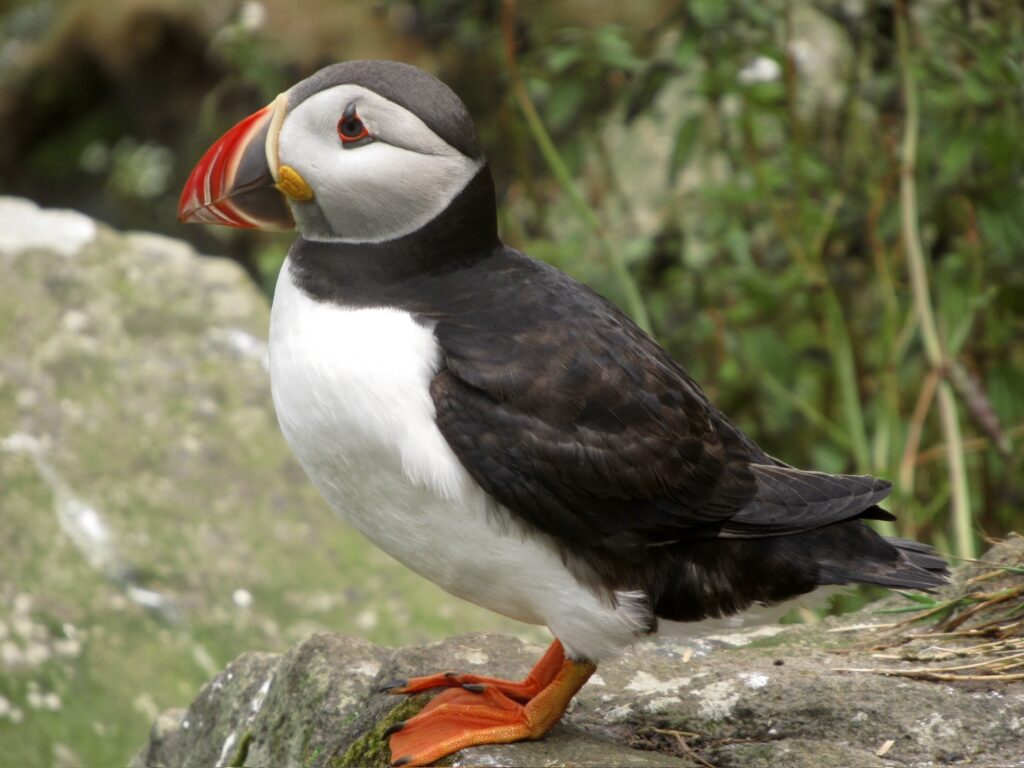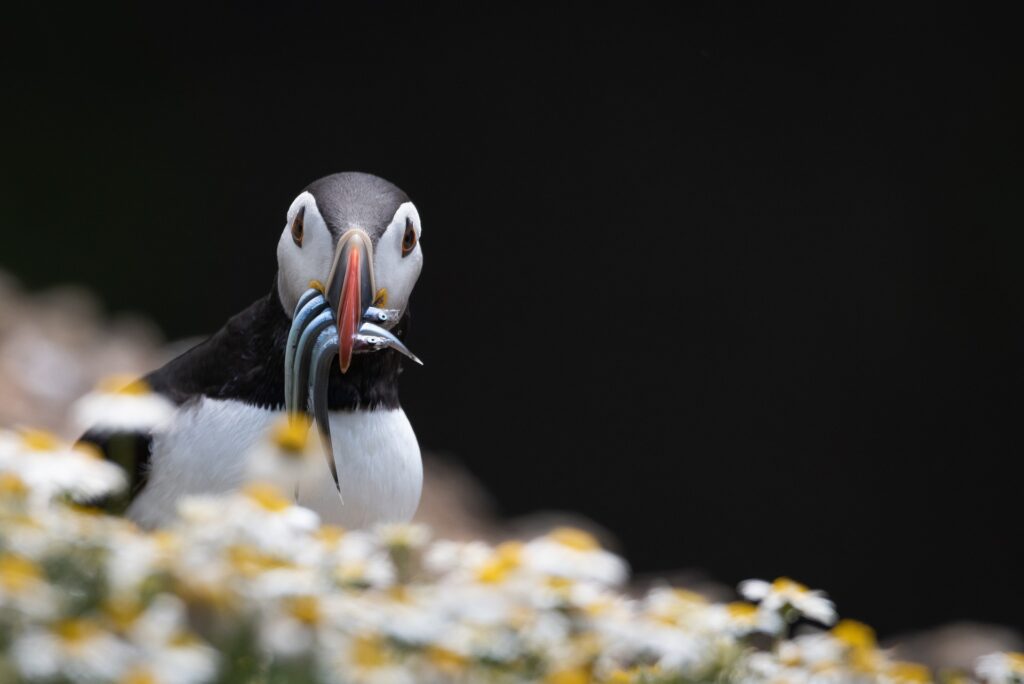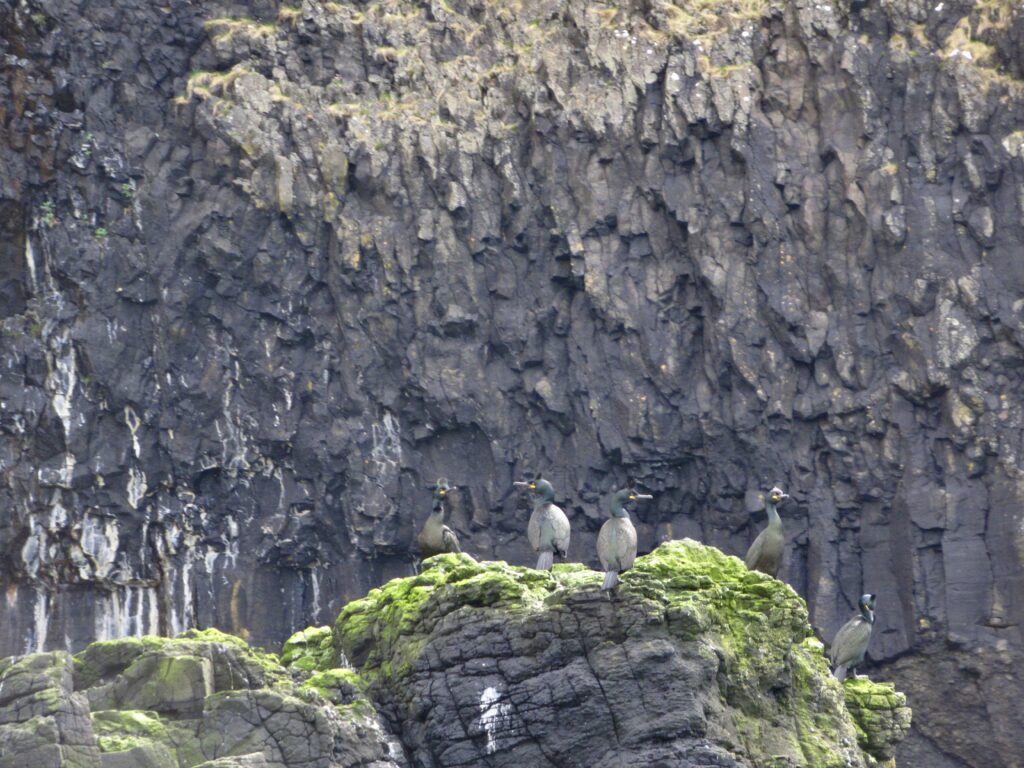Puffins in Scotland and How to See Them
Did you know, Scotland is one of the best places in the world to visit puffins up close? There are around 580,000 pairs of these little, quirky, clown-like seabirds living in the UK, with approximately 83% nesting in Scotland alone. This may sound like a lot, but what many people don’t realise is that these beautiful birds are now on the red list, meaning they are at risk of global extinction. Therefore, it’s vital to treat them with the utmost care and caution to ensure their survival.
I have already created a blog on “5 Incredible Birds in Scotland”. But I recognise having hosted many Scotland tours in the past that the love for the puffins is above all others in the region. Today, I’ll focus on helping you understand more about the Scottish puffin. Rather than huffin’ and puffin’ trying to do the research yourself, let me share some fascinating facts about these birds and the best places to see them.
When Do Puffins Arrive in Scotland
Puffins make a highly anticipated return to Scotland from late March/early April. Coming back to their temporary home on the same cliff top, underground burrow year after year. Ready to reunite with their partner for breeding season.
When the puffins arrive in spring you will be greeted by their beautifully coloured, bright orange and yellow bill. The bright colours signalling a strong immune system due to a diet high in antioxidants with a carotenoid pigment. And for the males an advantage when finding a mate.

Puffin on Isle of Lunga
Why Do Puffins Come To Scotland
Puffins can be found in some of the most remote areas of the UK, away from humans, away from predators and most importantly with an easy access to food next to the sea. The UK starts to warm up in spring and summer, having a knock on impact to the temperatures of the ocean. As this happens it brings with it an increase in marine life making it a crucial food source for the puffins including sand eels and herring.
They don’t return to land for the wifi. They come back to land to return to or find a new temporary home. Puffins find refuge in the cracks in cliff faces, others in old rabbit holes but most commonly they burrow 70cm to 110cm deep into the soft soil. Making it the perfect home to raise, protect and feed their vulnerable chick also known as a ‘puffling’.
How Puffins Feed Their Family
Once they lay their single egg, both parents take turns incubating it. Whilst the other flies out to sea in search of food. As you watch their short wings flapping like the sound of a drum beat you may think that they look very clumsy and inefficent. That’s because they aren’t designed for long distance flying but they are perfectly designed for underwater propulsion to catch their prey. Their prey is caught in their bill with a perfectly adapted grooved tongue holding the fish allowing it to dive for one fish after another without going back to the nest. Saving it energy and bringing plenty food back for the whole family.

Puffin Catching Sand Eels
How Long Do Puffins Stay in Scotland
Puffins can grace our shores until the first or second week of August, when we bid them an emotional farewell. One that, for some, is as touching as watching the Titanic.
By this time, the parents’ role in raising their chick is complete. Around 40–50 days after hatching, the puffling is ready to leave the nest and join the colony, heading out into the cold, stormy waters of the North Atlantic Ocean for the autumn and winter months.
As the seasons change, so does the puffin’s iconic bill. The vibrant outer layer fades and wears away, leaving it duller and discoloured. With no need to attract a mate until spring, survival takes precedence. This muted appearance may help the puffins blend into their environment, reducing the risk of predation as they navigate their pelagic life at sea.
Best Places To See Puffins in Scotland and Puffin Tours
Scotland Puffin Tours to Islands
The best places to see puffins in Scotland are undoubtedly the islands, where they gather in their hundreds, sometimes even thousands. Here you can spend time watching them fishing up close and, flying in a circular motion called the “puffin wheel”. It really is an incredible spectacle.
Personally, I recommend a boat trip over mainland sightings for the added excitement and unique experiences. Puffins rarely nest alone; they’re often accompanied by noisy neighbours such as guillemots, razorbills, kittiwakes, gannets, fulmars, and shags. And where seabirds thrive, fish are plentiful, which means you’re also likely to spot incredible marine life such as basking sharks, dolphins, minke whales, and more.

European Shag on the Isle of Canna
My two favourite Puffin boat trips are:
- Elgol to the Isle of Canna – This 4-hour tour is packed with highlights, including stunning views of the Black Cuillin ridge on Skye, the unique volcanic rock formations of Canna, and even the Jack Abry shipwreck on Rum. From an educational perspective, this tour is next level, offering fascinating insights into the region’s wildlife and geology.
- Mull to Lunga & Staffa – For a more intimate experience, this trip is unbeatable—especially if you’re lucky enough to land on both islands. You’ll have the chance to see puffins up close, sometimes as near as 1.5 metres, and even walk into the famous Fingal’s Cave.
If neither of these fits your itinerary, don’t worry Scotland offers plenty of other fantastic options. Here are some of the best locations for puffin spotting:
- Isle of Canna
- Isle of Lunga and Staffa
- Isle of May
- Farne Islands – Although not in Scotland this is very accessible from Edinburgh.
- St Kilda
- Orkney
- Shetland
Scotland Mainland
The numbers of puffins on the mainland aren’t as abundant as they are on the islands. However, sea conditions can be unpredictable and boat trips can be cancelled. If you don’t have the time to be flexible around boat trip dates and you know where they are on the mainland then you don’t have to worry! Here are four epic locations you can see them.
- Bullers of Buchan
- RSPB Scotland Troup Head
- Duncansby Head
- Fowlsheugh Cliffs
Top Tip and Thanks for Reading!
Thank you for taking the time to read my last blog post of the year! Before I wrap it up I must leave you with one last top tip. If you do go to visit these beautiful birds, bring your raincoat or poncho and KEEP THAT HOOD UP. If don’t you may get a little present landing on your head. I can guarantee you, there’s nuffin worse!
Nevertheless, I hope this guide has helped you learn more about these incredible birds and how to see them in Scotland. If you are coming to visit the country I recognise that you may not want to drive all the way out to these remote locations so, if you are looking for a driver or tour guide to build an itinerary around a Puffin Boat trip we can help! You can contact us through this link and fill in our contact form.